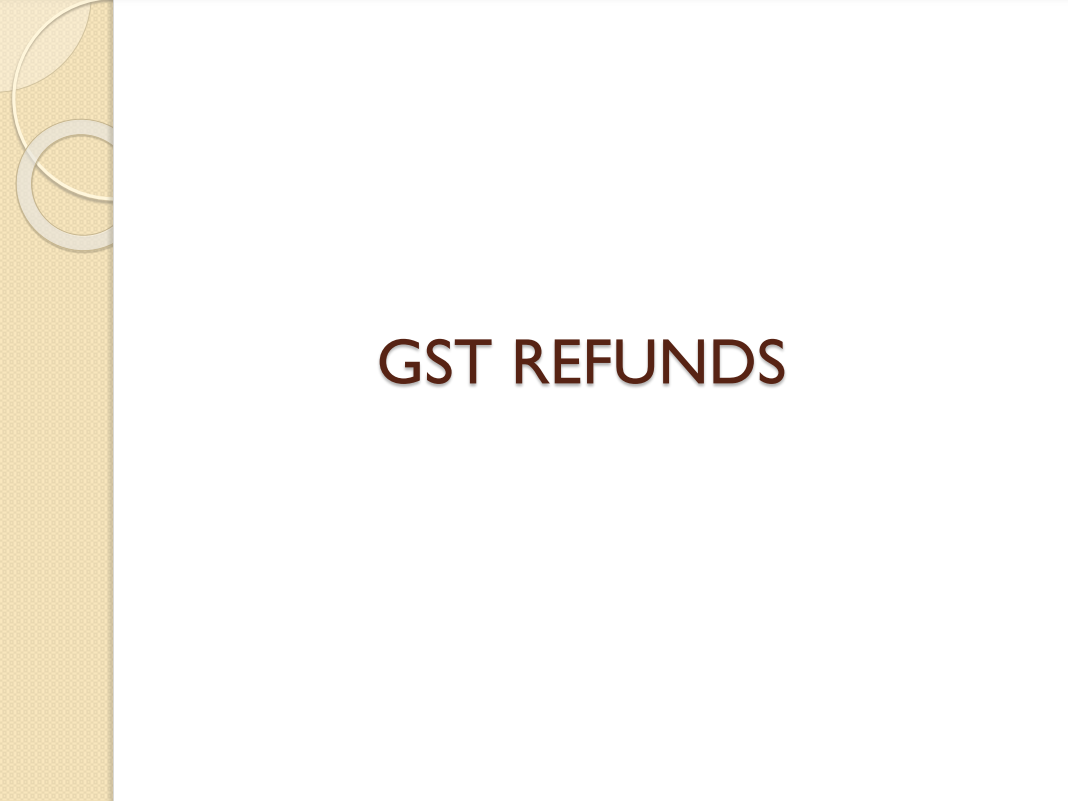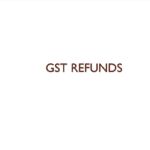Refund Form Under GST – Fill out the Refund Form Under GST if you owe taxes under the GST regime (Form RFD 01). A few papers must be sent with your application. Your eligibility for a refund is determined by the amount of tax you owe. Your bank account is electronically credited with the refund’s amount.
Type RFD 01
A taxpayer may request a GST refund from the GST department by submitting Form RFD 01 online. The system creates an ARN number once the application has been finished and the necessary information has been entered. To send the form to the designated officer, you must provide this number. If the application was approved or denied, the officer—who may be a State, Union Territory, or Central tax authority—will inform the taxpayer.
The reimbursement will be given if the application is approved. However, in order to receive the reimbursement, a few requirements must be satisfied. One of these requirements is that the petitioner must offer documentary proof that the refund being requested is authentic. A list of the bills against which the reimbursement is requested must be provided by the applicant. A certificate from a cost accountant or chartered accountant may be necessary in some circumstances to verify the refund claim.
The proper officer must send the applicant a show cause notice if they don’t follow the guidelines for the GST refund. Sections 54, 73, or 74 of the CGST Act require the issuance of this notice.
Documents needed to make a claim for a GST refund
You must submit a number of documents in order to request a GST refund. It is recommended to confirm the exact requirements with the federal or state tax authorities. There are no interest or other deductions allowed on the amount of the GST refund to which you are entitled. When requesting a GST refund, the following paperwork must be included:
You must provide copies of the letters or memos you sent to the buyers if you bought items that weren’t subject to sales tax to the Department of Revenue. The letters or memos must attest to the fact that you reimbursed the buyers for the tax. The sum owed to the purchasers should be deducted from the refund.
You can upload any exported products or services on the GST portal. You can download the excel file and look for faults to make sure your documents weren’t rejected. If you made a mistake, you can fix it and submit the documents again.
Returning money
You must provide specific documentation as part of the GST refund process in order to be eligible for a refund. For instance, the export invoice and bank realisation certificate are essential if you export services. The pertinent date for requesting a refund will be displayed on the invoice and BRC. The authorized officer will verify that these documents are accurate before issuing the reimbursement.
It should be as simple and quick as feasible to submit a GST refund claim. No exporter should have to deal with a backlog of documentation that takes too long to process. A system-based verification mechanism should be included as well, minimizing the need for human interaction. If the exporter could submit a refund request online, the procedure would go more quickly.
The return cash will be transferred to the Consumer Welfare Fund once the refund procedure is finished. An acknowledgment number will be sent to the applicant through SMS or email. The authorities will examine the refund claim within 30 days to make sure it is valid and does not include unfair or unjust enrichment.
Unfair augmentation of a refund claim
You can request a GST refund if you believe that the GST was applied to you incorrectly. A test known as the unjust enrichment test is used throughout the procedure. This test establishes if the amount you are claiming as a GST refund genuinely equals the amount of GST that you actually paid. To demonstrate that the amount you are claiming is the same as what you were charged, preserve the relevant records.
The appellant first sold power in a state where the price of the electricity was set by state officials. As a result, he was unable to transfer the responsibility to the customers. However, the products were used up in the electricity distribution.
The idea of unfair enrichment may not always hold true. Zero-rated supplies, the inputs used in such zero-rated supplies, and the unused input tax credit are an exception. If the taxpayer can demonstrate that the tax on the inputs was passed on to the buyer in these instances, the refund claim may not be valid.
Download Refund Form Under GST 2025

